Cremini mushrooms sometimes live in the shadows of their well-known edible relatives. They’re not quite the common white button, but they’re not quite the larger brown portobello either.
Yet did you know that all three belong to the same species, Agaricus bisporus? Cremini, also known as crimini mushrooms, are simply a different strain than the white button. Developed by commercial growers, they are brown in color and have a slightly deeper taste.
Growers also created the concept of portobello mushrooms to sell mature cremini. A portobello is just an older mushroom that has grown until the cap has expanded. That’s why cremini are often labeled as “baby portobello” or “baby bella”. Ah, advertising!
Let’s take a closer look at these hearty mushrooms. We’ll start with some basic facts, and move on to medicinal and culinary uses. Hopefully this information will make you hungry, so we’ll end with some cremini mushroom soup recipes.
Basic Facts
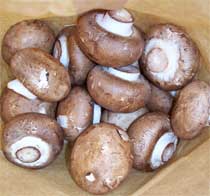 Cremini mushrooms strongly resemble the common white button, only with a brown cap. The Latin name for both is Agaricus bisporus.
Cremini mushrooms strongly resemble the common white button, only with a brown cap. The Latin name for both is Agaricus bisporus.
- They have a deeper, heartier flavor and firmer texture than white button mushrooms. If you find the white grocery store mushrooms boring or too soft, try substituting cremini.
- They are saprotrophs, meaning they feed on dead and dying material. You’ll find them in fields and grasslands throughout the world.
- Cremini mushrooms are widely cultivated but there are wild strains. They fruit from late spring to fall.
- They produce a brown spore print.
- These are great “learning mushrooms”. Easily obtained at the grocery store, dissect them for a mushroom anatomy lesson.
- If hunting for them in the wild, be careful not to confuse them with a deadly Amanita. Two big differences are that amanitas have a cup, or volva, around the base (cremini do not) and white gills (cremini gills are usually brown).
Uses for Cremini Mushrooms
Although not famous medicinal mushrooms like their reishi or maitake cousins, cremini do appear to be beneficial to the body.
There’s evidence that Agaricus bisporus inhibits aromatase, an enzyme that contributes to estrogen production. By controlling estrogen levels, the risk of breast cancer is lowered. See this page for a brief write up on a study done on decreasing tumor cells. (Be warned it contains harder science than some may have an interest for).
Beyond medicinal, the main uses for these mushrooms are culinary. These are famous edibles, and good for you as well. They’re known to contain:
Vitamin D
- Potassium
- B Vitamins
- Helpful antioxidants like selenium
- Fiber
- Linoleic acid (believed to be responsible for controlling estrogen levels)
These health benefits, along with great taste, make cremini mushrooms a welcome addition to many meals. Use them with eggs, meats, or vegetable dishes. They’re also excellent in soups, gravies, and stir-fries.
Another aspect that makes them great for cooking is that they’re very common in grocery stores. You won’t have to spend a day in the woods to have them for dinner, although I admit that is part of the fun!
Once purchased, store them in the refrigerator in a paper bag for up to a week. Never store mushrooms in plastic, as plastic doesn’t “breathe” and you’ll soon experience great disappointment when your mushrooms are mushy and gross.
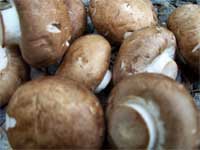
Don’t let that turn you off too much. Once cooked, mushrooms are quite safe. People have been eating them for years.
To get you started, I’ve included two delicious mushroom soup recipes below!
Cremini Mushroom Soup Recipes
Easy Mushroom Tomato Soup
Ingredients:
- 1/2 lb cremini mushrooms, sliced
- 3 cans chopped, diced, or stewed tomatoes in juice
- 2 cans vegetable or chicken broth
- 1 tbsp olive oil
- 1/2 onion, chopped
- 1 clove garlic, minced
- 1/2 tsp crushed red pepper flakes
Heat oil in large, non-stick pot over medium-high heat. Sauté onion and garlic together for about 3 minutes.
Add mushrooms, cook for about 7 minutes.
Stir in red pepper, tomatoes, and broth. You can purée the tomatoes first if you like, although I prefer them whole. Bring the entire mixture to a boil.
Reduce the heat to medium and simmer for about 10 minutes. If soup gets too thick add a small amount of water at a time.
Roasted Garlic Rice Soup
(This recipe is based on one from the USA Rice Federation).
Ingredients:
- 1 lb cremini mushrooms, sliced
- 2 (14 oz) cans chicken, beef, or vegetable broth
- 3 cloves garlic, minced
- 3 cups cooked brown rice
- 1/3 cup butter
- 1 sweet onion, chopped
- additional water as desired
- salt and pepper to taste
In a large, non-stick pot melt the butter over medium-high heat. Add mushrooms, onion, and garlic and cook for about 10 minutes.
Allow mixture to cool slightly, and pulse in a blender with 1 cup broth and 1 cup rice. You want the mixture to be chopped, not pureed.
Put the mixture back in the pot along with the rest of the rice, broth, and any additional water. Bring to a boil, and then cook uncovered over medium heat for 5 minutes.
Once the soup cools, add salt and pepper as desired.
Variations:
- If your diet allows, add some cooked pieces of bacon.
- For a creamier soup add 1 container of spreadable cheese when blending.
- If you like soup with a tomato flavor add a can or two of stewed tomatoes when blending.

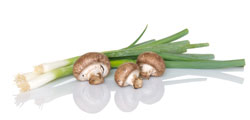 Vitamin D
Vitamin D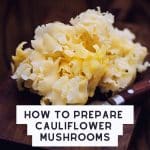
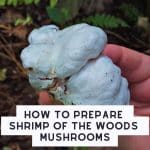


Leave a Reply